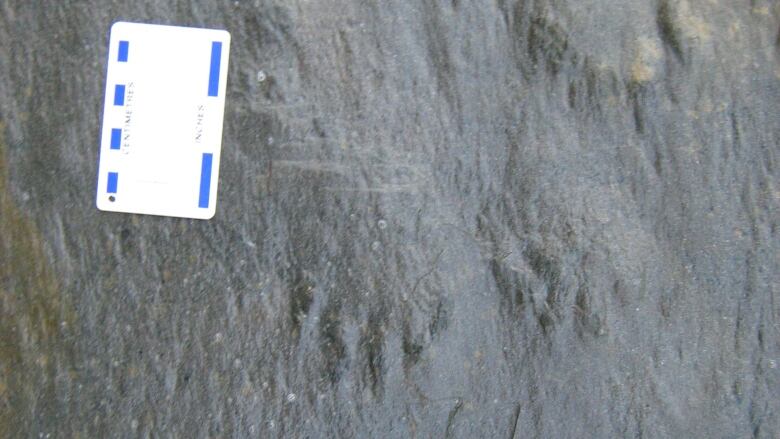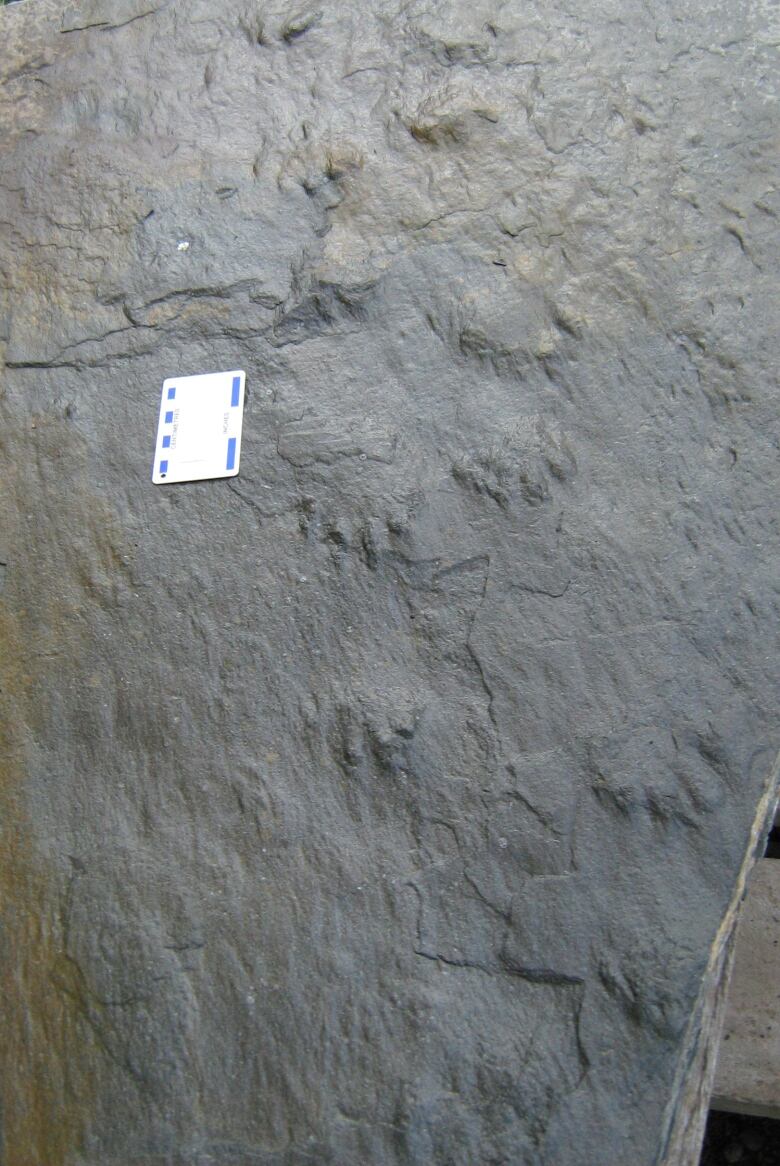Fossil discovery at western Newfoundland quarry 'one of a kind'
Evidence a giant salamander once roamed near Pynn's Brook

A fossil discovery at a flagstone quarry near Pynn's Brook, just outside Deer Lake, shows that a never-before-seen creature once roamed Newfoundland: a type of giant salamander.
Quarry operator Ken Tuach stumbled upon the fossil at work, while sifting through slabs of rock.
"I'm always browsing the stone, looking for aesthetic qualities and stuff, andI just noticed the footprints in the right light. They had quite the unique uniformity to them, you could recognize them quite quickly," said Tuach.
The tracks, each about the size of a man's palm, show an ancient animal on the move.
Tuach called in the experts to determine exactly what animal thatwas.

'An exciting find'
"I instantly recognized them as being vertebrae footprints, a tetrapod had made them," provincial geologist Ian Knight told The Corner Brook Morning Show. "I knew we had nothing like that in Newfoundland, so that was quite an exciting find."
Knight saidthe Pynn's Brook fossil appeared to be a metre-long, amphibious animal, with four toes on its front feet, five toes on its rear, and a long tail used for swimming and balance.
"In terms of modern day, it would look something like a giant salamander, such as you get in China and Japan. And we know that they live in fairly fast flowing streams, but also along lake shores and so on. So it's likely like that."
The confirmation blew Tuach away.
"I was pretty excited. It was the first time we've seen any animal life at all. We've been quarrying for 20 years, and I didn't realize there was even any critters on the go,`said Tuach.
Western Newfoundland: tropical paradise
The salamander inhabited a very different Pynn's Brook than that of 2015.

Knight said the tracks arearound 350 million years old, when western Newfoundland laysouth of the equator.
It was a warm, wet world made up of narrow rift valleys, with a lot of lakes, streams and rivers flowing amid mountains.
"There was significant vegetation, because it was damp. There was swampy conditions, forested places, and this is where the animal was living, along the edges of the lake and probably up into the stream," said Knight.
Knight said the Pynn's Brook prints are similiar to ones found in Nova Scotia and Scotland -- but had never been seen here.
"So here we had it in Newfoundland for the first time," said Knight. "And that made for some excitement, because it means these animals, which are not very plentiful, had actually moved through or lived here in western Newfoundland back around 350 million years ago."
The search for more salamanders
Knight said a larger investigation for more fossils at the quarry will depend on government resources, but he plans on keeping in touch with Tuach and making more trips out to check through the stones.
He also hopes other experts and academics get involved.
Tuach said he'll be doing his part on the ground, to try and preserve any future finds, and the discovery has put his flagstones ina whole new light.
"I'm now looking at them a little bit more carefully than i was before," said Tuach.












_(720p).jpg)


 OFFICIAL HD MUSIC VIDEO.jpg)
.jpg)



























































































